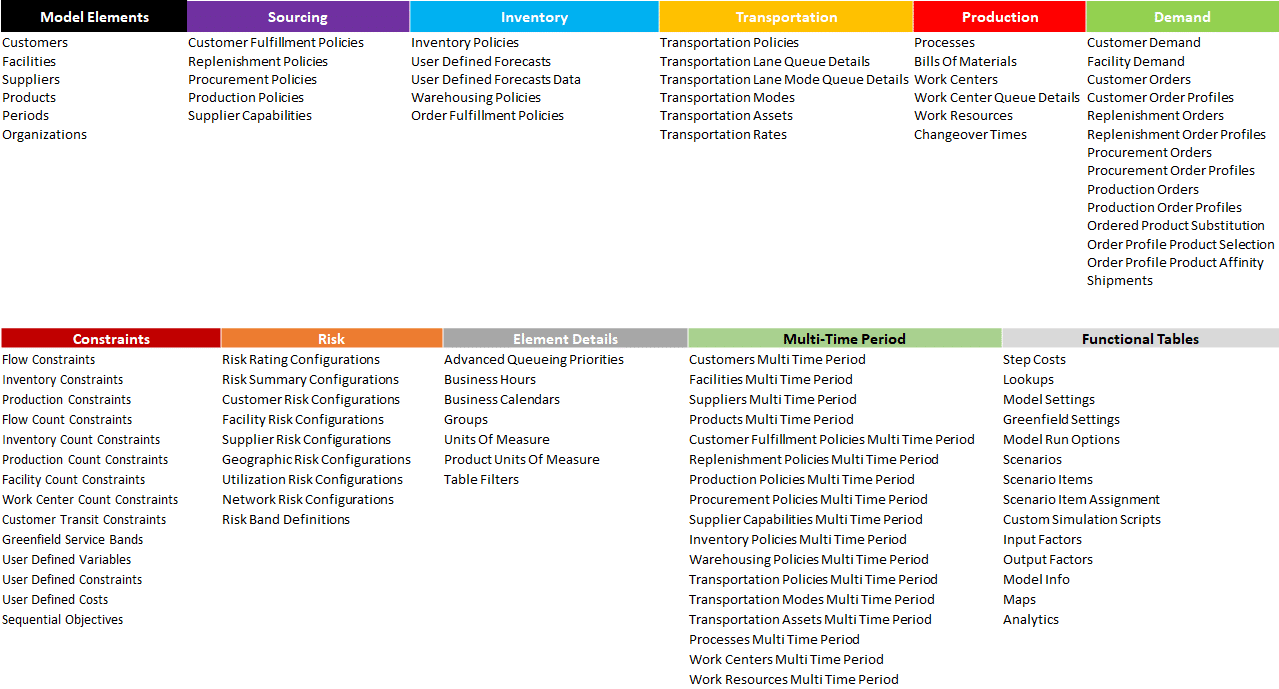

Anura contains 100+ (and growing) input tables to organize modeling data.

There are six minimum required tables for every model:
This includes one table to identify the demand that must be met, two tables to lay out the structure, and a last table to link them all together with policies.
Most supply chain design models use at least one table each of the first five model categories (Modeling Elements, Sourcing, Inventory, Transportation, Demand). A Neo model converted from Supply Chain Guru© will generally contain the following tables:
By entering information in all of these tables you will have successfully added all demand, created all model elements, created sourcing and transportation policies for all arcs, and added an inventory policy to ensure inventory can be stored throughout the supply chain.
While not required, many Neo models will also contain data in the following tables:
Anura contains 100+ (and growing) input tables to organize modeling data.

There are six minimum required tables for every model:
This includes one table to identify the demand that must be met, two tables to lay out the structure, and a last table to link them all together with policies.
Most supply chain design models use at least one table each of the first five model categories (Modeling Elements, Sourcing, Inventory, Transportation, Demand). A Neo model converted from Supply Chain Guru© will generally contain the following tables:
By entering information in all of these tables you will have successfully added all demand, created all model elements, created sourcing and transportation policies for all arcs, and added an inventory policy to ensure inventory can be stored throughout the supply chain.
While not required, many Neo models will also contain data in the following tables:

